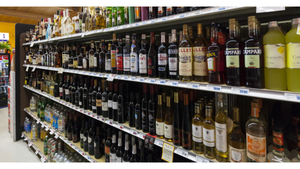UNITED 2000 2000-03-13 (2)
PHOENIX -- Like other industries during times of great change, e-commerce, business-to-business companies will eventually encounter a shakeout, leaving only the brightest and best.Until then, however, retail trade participants are urged to get involved because, no matter what happens, e-commerce isn't just a fad, according to a panel of e-trade leaders who spoke about the business during the annual
March 13, 2000
ROBERT VOSBURGH
PHOENIX -- Like other industries during times of great change, e-commerce, business-to-business companies will eventually encounter a shakeout, leaving only the brightest and best.
Until then, however, retail trade participants are urged to get involved because, no matter what happens, e-commerce isn't just a fad, according to a panel of e-trade leaders who spoke about the business during the annual convention here of the United Fresh Fruit and Vegetable Association, Alexandria, Va.
"I think at the end of the day, we're going to find two or three players out there, worldwide," said Rick Harris, vice president of GlobalFoodExchange.com, Atlanta. "This is definitely a marathon that each of our companies is working with."
The list of business processes already feeling the influence of e-commerce includes a variety of buying and selling venues ranging from open auction to one-on-one, logistics, transportation services, credit, purchasing histories, invoicing and even marketing. And, the list goes on.
"At its most simplistic, everything that you're doing over phone or fax will simply migrate to a Web-based system," said Win Winogrond, executive vice president of World Commerce Online, Orlando, Fla. "After that, the first thing will be the 'buying and selling as you're able' trade system."
The entire conversion will be a slow process, but one that is inevitable as the retail food industry rounds out its period of consolidation, and executives look to uncover and integrate cost efficiencies throughout larger and larger companies.
"Our retailer [customers] are telling us it's already touching invoice reconciliation," noted Greg Flood, president and chief executive officer of Produceonline.com, South Pasadena, Calif., adding that supermarket operators report that 20% of all produce invoices are incorrect. "The Web is going to simplify fixing those transactions that are costing untold amounts of money to track down."
In choosing a Web site, retailers and grower/shippers have to shop the product just like they do any other service. Harris said that as users become more familiar with the technology and how it fits into the needs of their specific company, the differentiating factors between the sites will become more obvious.
"What it will come down to is the services that are provided in addition to the normal transactions," he said. "Some of those may include things like logistics, inspections and credit services, things that are not consolidated right now in your current [operating] system."
Marina Kotsianas, president of Agribuys.com, Torrance, Calif., said that potential customers must ask themselves three questions in choosing a preferred e-commerce company.
"What you need to look at is, who is going to develop the best relationship with the buyers? You need a company that handles a variety of products, because that's what the buyers need and who can take you globally," she said.
While many in the industry have expressed skepticism, or even fear, of e-commerce and the changes it represents, panel members pointed out that the various Web companies in operation today are no different than the number of long-distance phone providers.
"What we're looking at is taking technology, applying it to business practices, and trying to make them more efficient," said John Abkes, president of Data Transmission Network, Omaha, Neb. "It's not new, it's not scary. It's simply taking the time educating all of us and applying it to our businesses."
Of all the issues surrounding e-commerce and what it represents to both sides of the supply chain, integration is emerging as the primary hurdle, panel members agreed. Many companies have already invested large sums of money and time installing business systems that range from phones, fax machines and even electronic data interchange systems. Now, they're asking how Web-based B-to-B technology fits in, and how much it's going to cost.
"When you move a transaction from point A to point B, it would have a cost, just like picking up the phone and calling someone," said Abkes.
At the same time, however, "you keep your existing system in place, and our system exchanges files with yours. We have created ways of taking codes and inventories, and converting them to industry standard codes."
"As an operating company, you will not find a less expensive move to technology than you're going to have with these systems, because you don't have to put up the big bucks. We're doing it," said Winogrond.
Increasing efficiency and reducing costs is one aspect of the value equation, panelists stated. Another is better use of time to connect with trading partners on new levels.
"How can I help you? This is how you're going to differentiate yourself," said Kotsianas. "Technology is going to help you do this."
And, aside from straight business applications, new marketing opportunities are emerging on the Web as well, in terms of promotions and advertising, a development that promises to deliver more effective and direct marketing tools, members said.
At the same time, the Web-based business systems cannot resolve credit disputes or similar disagreements, just as the phone company doesn't mediate a dispute involving a faulty item ordered from a catalog.
The benefit lies in easily accessible records and supporting documentation from a single source, an aspect of e-commerce that may speed up the resolution of disputes, the panel said.
"As the facilitator of the transaction, we want you to know that you will have someone come and visit you, explain the system, explain the critical interface side of the system," said Flood of Produceonline.com. "Because the interface side of the system is different depending on the grower/shipper."
About the Author
You May Also Like




